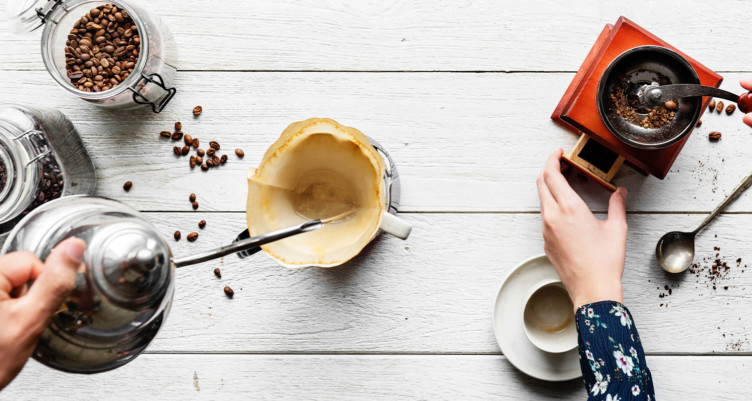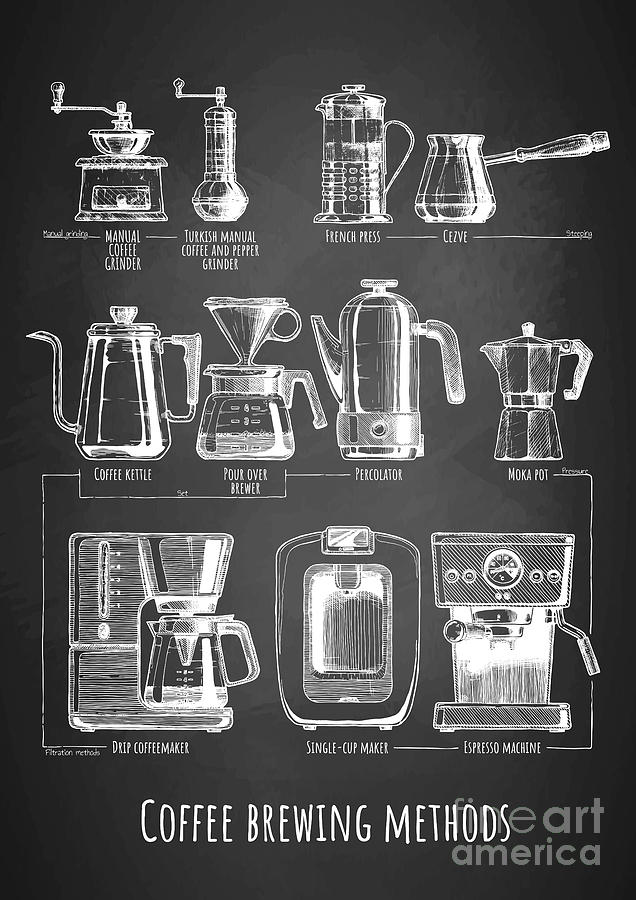The Science Behind Coffee Developing: How Temperature and Time Affect Your Beverage
Comprehending the scientific research behind coffee developing discloses that temperature and time are not simple variables however essential aspects that dictate the drink's flavor profile and general quality. The optimal brewing temperature level normally falls in between 195 ° F and 205 ° F, while the period of extraction differs dramatically across various techniques. This interaction of factors can result in a mug that is either fascinating or unsatisfactory. As we check out the nuances of these elements, the inquiry arises: how can one properly equilibrium temperature and time to accomplish that perfect brew?
The Chemistry of Coffee Extraction
The chemistry of coffee extraction explores the detailed processes that transform raw coffee beans right into the fragrant beverage taken pleasure in worldwide. This improvement mostly includes the solubility of different substances existing in the beans, which are affected by factors such as grind dimension, water high quality, and the brewing technique utilized.
During the brewing process, warm water works as a solvent, removing soluble compounds, consisting of high levels of caffeine, acids, lipids, and sugars, from the coffee grounds. Each substance adds to the flavor account, scent, and body of the final beverage. Acids are accountable for brilliant and zesty notes, while oils add to a rich mouthfeel.
The preliminary phases of brewing remove acids and sugars, leading to a pleasurable level of acidity, while extended extraction can lead to resentment due to over-extraction of undesirable compounds. Comprehending these chemical interactions is essential for maximizing brewing techniques, as the equilibrium between extraction time and water temperature can substantially influence the overall top quality of the coffee.
Suitable Brewing Temperatures
Locating the right brewing temperature level is crucial for unlocking the complete possibility of coffee flavors and fragrances - coffee brewing methods. Research study indicates that the optimum array for developing coffee lies in between 195 ° F to 205 ° F(90 ° C to 96 ° C) Within this range, the extraction process efficiently dissolves the desirable soluble substances in coffee beans, resulting in a well balanced and flavorful cup
Developing at reduced temperature levels, such as below 195 ° F(90 ° C ), may result in under-extraction, producing an acidic and weak mixture with soft flavors. Conversely, developing at temperatures surpassing 205 ° F(96 ° C) can cause over-extraction, producing a bitter and extreme preference due to the extreme dissolution of undesirable compounds, such as tannins.
Moreover, the perfect developing temperature level can vary depending upon the coffee bean type and roast level. As an example, lighter roasts usually profit from somewhat greater temperatures to enhance their complicated flavor profiles, while darker roasts may be better matched to reduced temperature levels to mitigate bitterness.
Inevitably, preserving precision in brewing temperature levels is vital for achieving an unified equilibrium of flavors, ensuring that every cup of coffee delivers a gratifying sensory experience.
Effect of Developing Time
Developing time plays a crucial role in establishing the flavor account and general top quality of coffee. The removal procedure, which affects the taste, scent, and body of the drink, is mostly dependent on the length of time the coffee grounds touch with water. Much shorter brewing times can result in under-extraction, leading to a sour or weak taste, as not nearly enough soluble compounds are liquified. Alternatively, prolonged developing can result in over-extraction, where unwanted compounds are released, causing a bitter or astringent preference.
Optimum brewing time differs depending upon the approach used and the work size of the coffee. As an example, a French press normally needs regarding four mins, while coffee extraction is normally completed within 25 to 30 secs. It is important to calibrate developing time in combination with other variables, such as water temperature and coffee-to-water ratio, to achieve the desired taste account.
Recognizing the influence of developing time makes it possible for coffee fanatics to fine-tune their developing techniques, inevitably enhancing the sensory experience of their cup (coffee brewing methods). With cautious interest to this variable, one can unlock the complete capacity of the coffee, exposing its unique attributes and nuances
Developing Techniques and Their Impacts

As an example, methods like French press and cool mixture enable a much longer steeping time, leading to a fuller body and durable flavor due to enhanced extraction of oils and soluble solids. Alternatively, coffee brewing utilizes high stress and a much shorter removal time, producing a focused shot that emphasizes extreme flavors and a rich crema.
Pour-over strategies, such as Chemex or V60, use a more controlled extraction procedure, allowing the maker to adjust circulation price and water distribution, which can enhance illumination and clearness. Percolation techniques cycle water via the coffee grounds multiple times, leading to a stronger, usually bitter flavor.
Last but not least, using paper filters versus steel filters can additionally impact the last preference; paper filters generally yield a cleaner mug by capturing oils and great fragments, while steel filters enable even more oils to go through, adding to a fuller mouthfeel - coffee why not find out more brewing methods. Comprehending these nuances can raise the coffee experience considerably
Tips for Refining Your Brew
A well-executed mixture can change also the simplest coffee into a remarkable experience. To attain this, focus to information is necessary. Begin with top quality, freshly roasted beans, as their flavor profile lessens in time. Grind the beans just before brewing to maximize quality, guaranteeing the grind size matches your brewing technique-- coarser for French press and finer for espresso.
Water quality plays an important role; usage filtered water without contaminations. The suitable developing temperature level varies in between 195 ° F and 205 ° F(90 ° C to 96 ° C ) Also hot can burn the coffee, while as well trendy may under-extract tastes.
Timing is just as vital. For immersion approaches, steeping for 3 to five mins is ideal, whereas drip approaches normally take around five mins. Explore mixture times to locate your preferred strength.

Verdict
In summary, the complex partnership in between temperature level and time is extremely important in the coffee developing procedure. Comprehending these scientific concepts encourages individuals to improve their brewing strategies, inevitably leading to an extra pleasurable and well balanced coffee experience.
Understanding the science behind coffee developing discloses that temperature level and time are not plain variables yet essential aspects that dictate the beverage's taste account and total top quality. Understanding these chemical interactions is essential for enhancing brewing methods, as the equilibrium between extraction time and water temperature level can dramatically influence the general top quality of the coffee.Developing time plays a critical duty in identifying the taste account and total high quality of coffee. By focusing on these components-- bean high quality, grind dimension, water temperature level, steeping time, and proportion-- you can boost your coffee brewing process, resulting in a consistently superior mug.
In recap, the intricate relationship in between temperature level and time is extremely important in the coffee developing process.